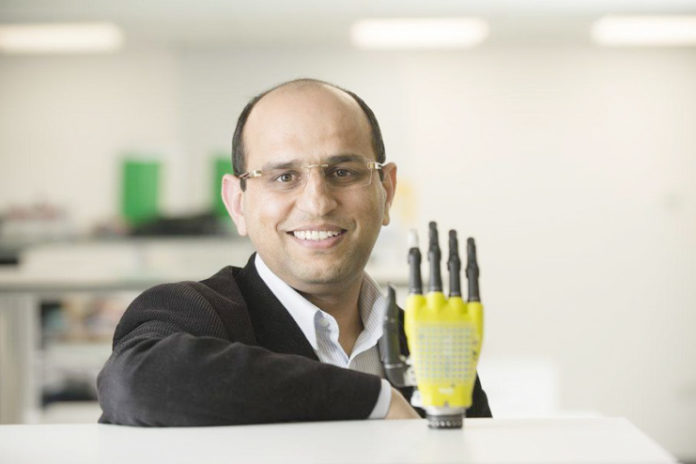An Indian-origin scientist working on creating a robotic hand covered in alleged “brainy skin” that mimics the human sense of touch has won 1.5 million pounds in funding for the project.
Ravinder Dahiya, Professor of Electronics and Nanoengineering said the idea of futuristic “thinking skin”, that may be used one day to make more responsive prosthetics for amputees, or to build robots with a sense of touch is inspired by the incredibly complex elements of actual skin,
“Brainy Skin is critical for the autonomy of robots and for a safe human-robot interaction to meet emerging societal needs such as helping the elderly,” said Professor Dahiya.
The scientist has plans to develop ultra-flexible, synthetic “Brainy Skin” that “thinks for itself,” along with his Bendable Electronics and Sensing Technologies (BEST) team. Brainy Skin has its own neurons that react instantly to touch instead relaying the whole message to the brain. It reacts like human skin.
Also Read: Indian-origin MPs Lobby Theresa May Over British Sikh Murder Suspect
Made from silicon-based printed neutral transistors and graphene, “thinking skin”, the new version in the making is said to be more powerful, less cumbersome and would work finer than earlier prototypes.
Professor Dahiya explains, “Human skin is an incredibly complex system capable of detecting pressure, temperature and texture through an array of neural sensors that carry signals from the skin to the brain.
“Inspired by real skin, this project will harness the technological advances in electronic engineering to mimic some features of human skin, such as softness, bendability and now, also sense of touch. This skin will not just mimic the morphology of the skin but also its functionality.”The research, dubbed neuPRINTSKIN (Neuromorphic Printed Tactile Skin), received the latest 1.5 million pounds in funding from the Engineering and Physical Science Research Council (EPSRC).
He plans to introduce tactile skin with neuron-like processing, with an additional EPSRC funding. This insight in the tactile sensing research will lead to the introductory neuromorphic tactile skin, or “brainy skin”.
Professor Dahiya will add a new neural layer to the e-skin, to achieve this that he has already been developed using printing silicon nanowires.
Professor Dahiya said that by adding a neural layer underneath the actual tactile skin, neuPRINTSKIN will add important new view to the e-skin research, and trigger transformations in various areas.
By Sowmya













































